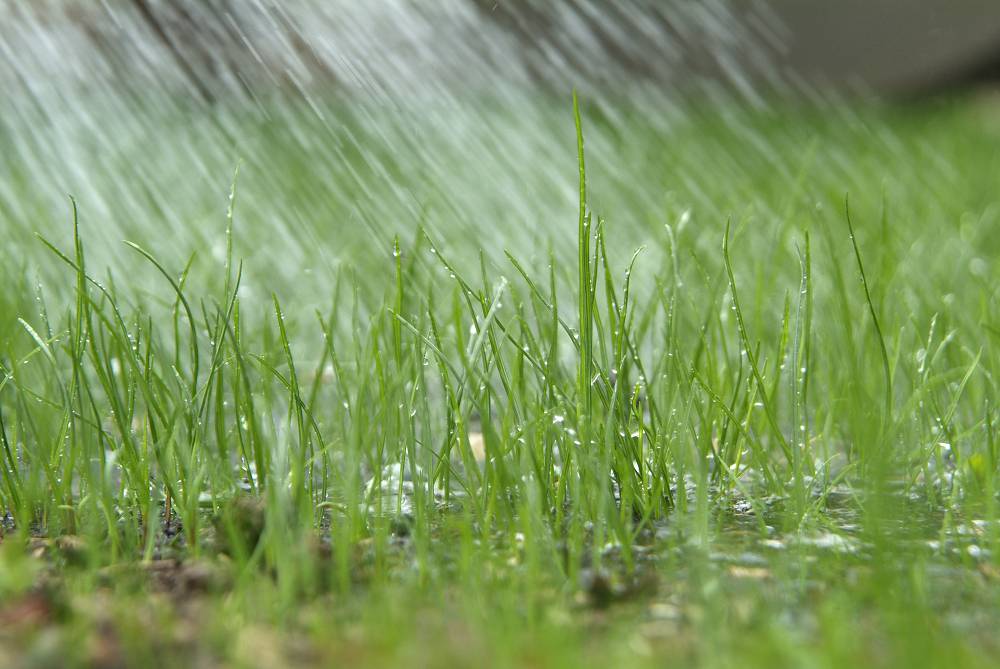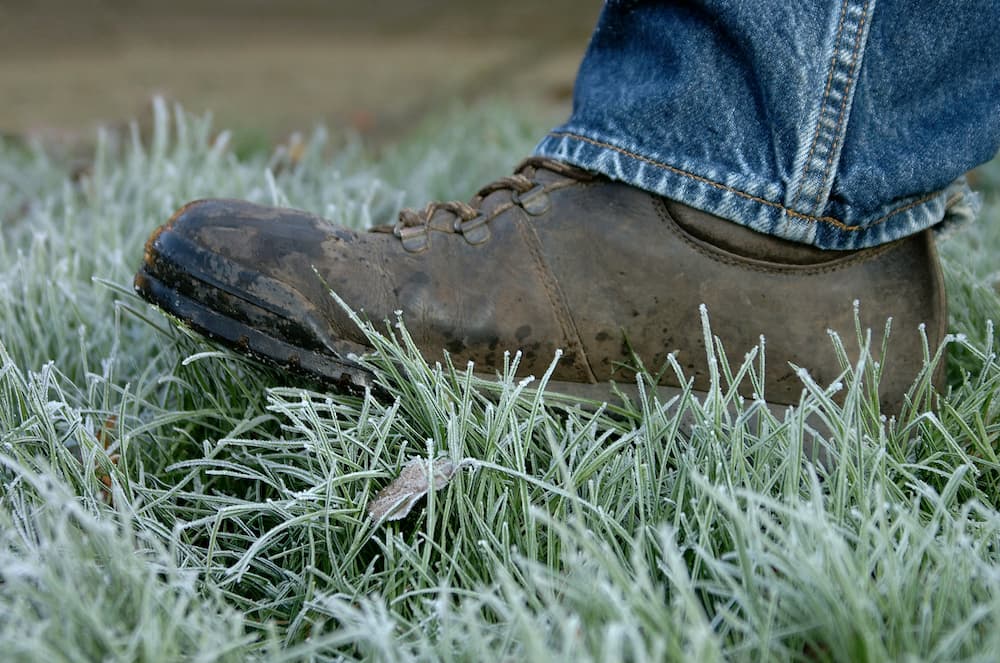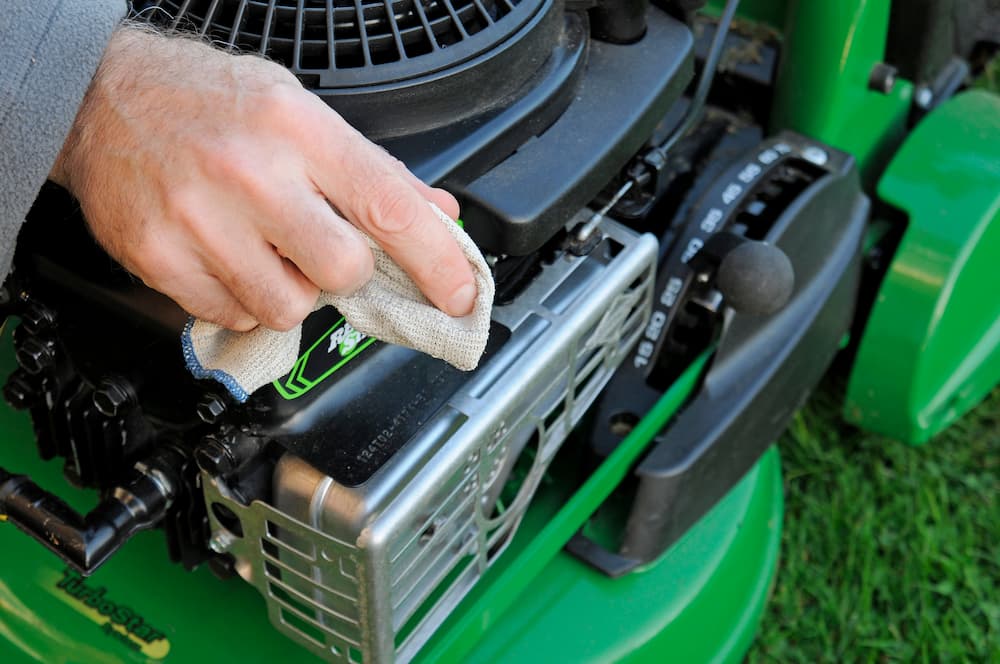Maintaining grass throughout the year: 15 tips for every season

Maintaining your lawn is mainly a matter of mowing it regularly in the summer, right? That's right, but if you want a truly beautiful lawn, you need to do more. With the right care for your lawn, you can prevent problems like moss and bare patches. This article explains exactly what you need to do each season to keep your lawn in top condition.
Read more below the advertisement
In spring, the grass awakens from its winter dormancy and begins to grow again. That's why this is the perfect time to give your lawn a good start for the rest of the year. Don't skip these lawn chores in spring:

In March, the grass starts growing again, and it's time for action. Mow as soon as you see growth starting to gain momentum. Don't cut the grass very short right away; start with a higher mowing height and lower it after a few mowings. Continue mowing regularly until autumn.

April is a great month to scarify your lawn. This removes moss and thatch (a buildup of dead grass and roots). Use a rake or a specialized scarifier for this. Also, use this time to aerate the soil by poking holes in it. This gives the grass air and space to grow into a healthy, green lawn. If your lawn drains poorly, also sprinkle some sand over the grass to improve the soil structure.

After scarifying, your lawn often looks a bit shabby. Don't worry! Simply sow some fresh grass in the unsightly and bare patches. Keep the soil moist after sowing until the grass starts to grow well. Read more about this in our article on sowing grass .
After scarifying and sowing, you can also fertilize your lawn immediately, but only use an organic fertilizer. This is gentle on the newly sown grass. In spring, once the soil temperature is around 10°C, use a fertilizer high in nitrogen. This promotes rapid grass growth.

As soon as the grass grows, weeds inevitably return. It's best to remove weeds early in the season, when they're still young. This not only makes them easier to remove, but also prevents them from spreading or taking deeper root. You'll benefit from this for the rest of the season.

- Start mowing as soon as the grass grows
- Scarify in case of moss or felt formation
- Aerate and sprinkle sand for better drainage
- Reseed bare patches
- Fertilize with spring fertilizer
In summer, lawn maintenance primarily involves regular mowing, grooming, and protecting the lawn from drying out and burning. These are the tasks on your summer schedule:

One of the main tasks for your lawn in the summer is regular mowing. Ideally, mow once or twice a week, depending on the growth rate, but avoid these mistakes when mowing grass . If you really hate mowing, you might want to consider alternatives to grass ...

During dry spells, it's best to water sparingly but deeply. Do this preferably early in the morning so the water doesn't evaporate before it reaches the roots. Also read our article on watering your lawn to find out how often and how long you really need to water.
Regularly trimming the edges not only keeps your lawn neat and tidy, but also helps keep it looking neat. Grass tends to spread out over time – preferably towards your flower beds. By occasionally digging a spade into the edges and cutting it back, you prevent your borders from shrinking and your lawn from growing bigger.

Summer is often very hot (sometimes even extremely hot) and dry. Give your lawn a break during this period. In hot and dry weather, it's better to let the grass grow a little longer (about 5 cm) so it's more resistant to evaporation and burning. And if the grass does turn brown? Leave the mower and sprinkler alone and just wait for the next rain shower. A healthy lawn will quickly recover.
- Mow regularly, but not too short during dry periods
- Water during prolonged drought (deeply once a week)
- Keep the lawn edges neat
- Avoid intensive use in extremely hot weather
Autumn is a recovery period for your lawn. This is when you can repair much of the summer damage and prepare your lawn for winter.

Fertilize around September with a special autumn fertilizer that contains less nitrogen and more potassium – this makes the grass stronger and more resistant to cold. Don't be tempted to add leftover spring fertilizer, as this will cause the grass to grow too vigorously. And that's exactly what you don't want before winter sets in.
October is often the last month you can mow, but don't cut the grass too short. It's better to let the grass go into winter a little longer (5–6 cm), as this offers protection from the worst winter weather.

If there's heavy moss growth, you can also scarify again in the fall. Also, regularly clear away leaves after leaf fall to prevent the grass from suffocating. Tip: make leaf mold from fallen autumn leaves.
- Fertilize with autumn fertilizer
- Last mowing (at 5-6 cm)
In winter, don't overdo it. The grass doesn't grow, but it is vulnerable to treading, frost, and suffocation. Stay indoors and only do the essential jobs:

From December through February, try to walk on the lawn as little as possible during frost or prolonged wet weather to prevent damage to the grass and soil compaction. Keep the lawn as clear of leaves and branches as possible.
If the soil is very acidic, you can apply lime before spring. This improves nutrient absorption in the spring.

Use the winter months to maintain your garden tools. Sharpen the blades and check that the lawn mower is still working properly, so you can get started right away in the spring.
- Avoid entering in frosty or wet conditions
- Remove leaves and branches
- If the soil is acidic, sprinkle lime if necessary.
- Maintain your lawn mower and tools
- Fertilize March to May (spring fertilizer), September to October (autumn fertilizer)
- Scarifying March-May, September-October
- Aeration March-April, September-November
- Sowing March-May, September-October
- Weed removal March to October
- Water May to August (during prolonged drought)
Tip: Click "Save post" to quickly find this article. This way, you'll always have your annual lawn care overview at hand.


%3Aformat(jpeg)%3Abackground_color(fff)%2Fhttps%253A%252F%252Fwww.metronieuws.nl%252Fwp-content%252Fuploads%252F2024%252F10%252Fstorm-in-spanje-extreem-weer.jpg&w=3840&q=100)
%3Aformat(jpeg)%3Abackground_color(fff)%2Fhttps%253A%252F%252Fwww.metronieuws.nl%252Fwp-content%252Fuploads%252F2025%252F07%252Fvliegen-vliegschaamte.jpg&w=3840&q=100)

